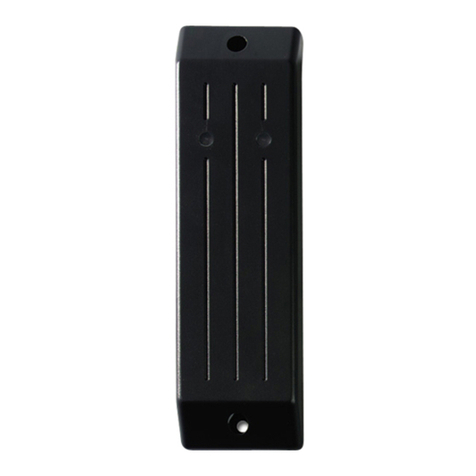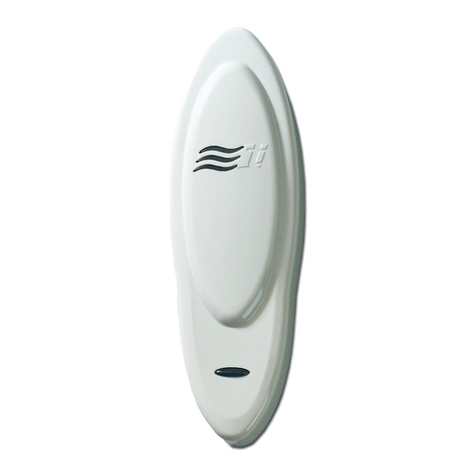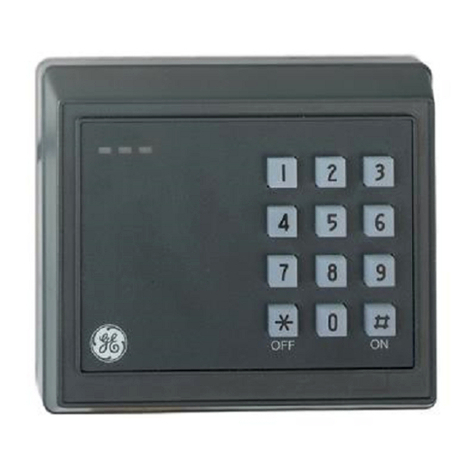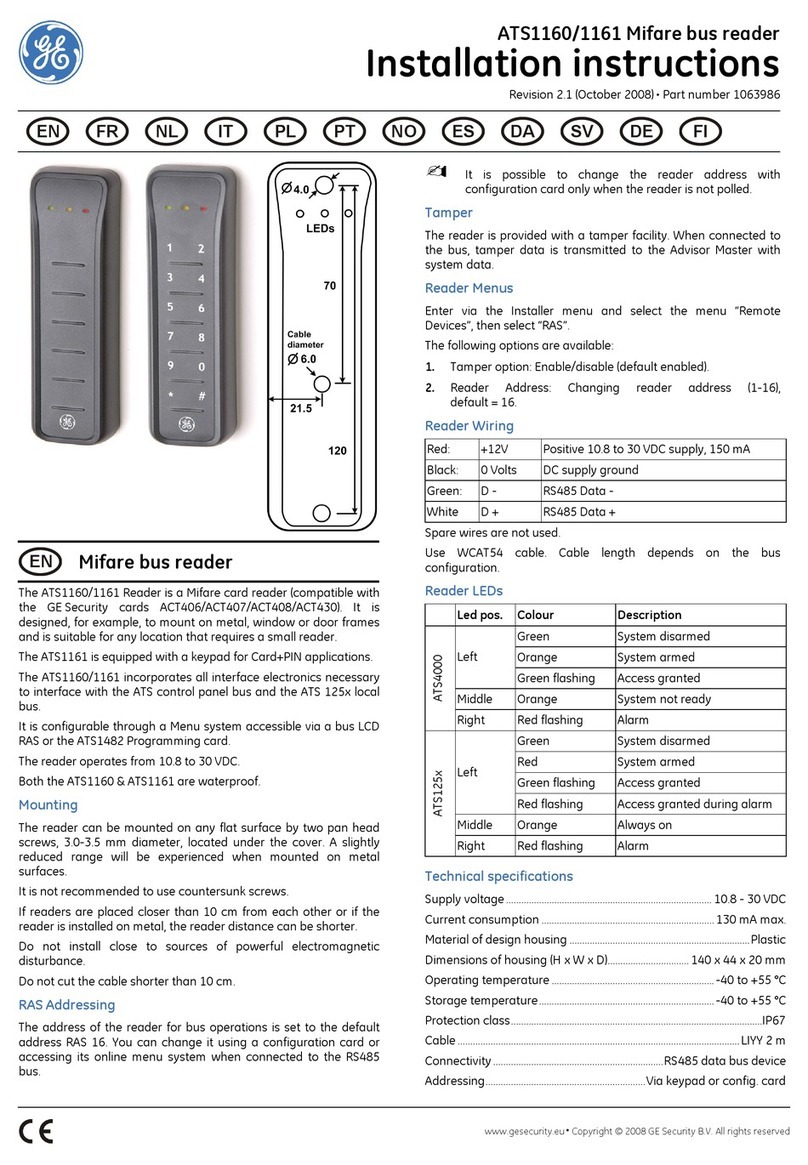
1040736C • February 2007
Copyright © 2007, GE Security Inc.
Smart Card Reader • AL-1191, AL-1193
Installation Instructions
Introduction
This is the GE Smart Card Reader Installation Instructions for
models AL-1191 and AL-1193. The smart card reader is a multi-
function, all-purpose proximity card reader suitable for all loca-
tions (including outdoors) that require a short-range reader. You
can connect the reader directly to the Alliance system RS485
databus.
You can configure the reader through the control panel menu
when it is connected to the system databus, through the DGP
menu when it is connected to the local databus, or you can use a
configuration card. Refer to the Smart Card Reader Program-
ming Manual for more information.
The AL-1191 model is shipped with a white removable cover
(there are five other colors available).
Reader components
Figure 1 shows the reader components.
Figure 1. Reader components
Blue LED. Door open, disarmed.
Red LED. Door open, armed
Comms. LED control, buzzer control, power.
Installation
You should program the reader and change the default address
(16) before you install the reader. Refer to the Smart Card
Reader Programming Manual for programming details.
You can mount the reader on any flat surface with two #6 (3 to
3.5 mm diameter) panhead screws (Figure 1). We do not recom-
mend using countersunk screws.
You will experience a slightly reduced range if you mount the
reader on a metal surface. If you mount the AL-1191 reader
outdoors, ensure that the blue LED is at the top.
To mount the reader, do the following:
1. Gently pry the AL-1191 cover sides away from the main
reader body to remove cover and expose the mounting
screws. Do not use excessive force or the reader can be
irreparably damaged.
2. Mount the reader using the mounting screws.
3. Gently press the cover over the main body of the AL-1191
reader until it locks into place.
Wiring
Table 1 describes the reader wiring components.
AL-1191
AL-1193
Blue LED
Red LED
Comms
Blue LED
Red LED
Comms
Cover
Table 1. Wiring components
Wire color Name Description
Red Positive 9 to 14 VDC supply.
Black 0 V DC supply ground.
Green D-/D0/Data RS485 Data -, Wiegand Data 0
Absolute maximum, 12 V at 10 mA
White D+/D1/Clock RS485 Data +, Wiegand Data 1
Absolute maximum, 12 V at 10 mA
Brown LED 1 Offline LED control configured to two-wire
control will control the red LED only.
Wire grounded: red LED on
Wire open: red LED off
Wire at +5 to +12 V: red LED off
Offline LED Control configured to one-wire
control will control both the red and blue LEDs
Wire grounded: blue LED on
Wire open circuit: both LEDs off.
Wire at +5 V to +12 V: red LED on.
Absolute maximum, 14 V
Yellow LED 2 Configurable to control the blue LED when
offline.
Wire grounded: blue LED on.
Wire open: blue LED off.
Wire at +5V to +12V: blue LED off.
Request-to-exit input when online to Alliance.
This input may be connected to a push button
connected to ground with RTE only selected on
the option card or in Menu 10. Refer to the
Smart Card Reader Programming Manual.
Blue Buzzer Offline buzzer control.
Wire open or +5V to +12V: buzzer off.
Wire grounded: buzzer sounding.
Absolute maximum, 14 V.
Violet Open collector Configurable as: door relay, tamper output,
credit controlled pulse, timed, or latched
output.
Absolute maximum, 14 V at 25 mA
This is a low current output and must not be
used to directly energize high current door
openers.
470 ohm
resistor
Used to terminate RS485 bus when the reader
is the last device on the bus.
Install across D+ (white) and D- (green).



























